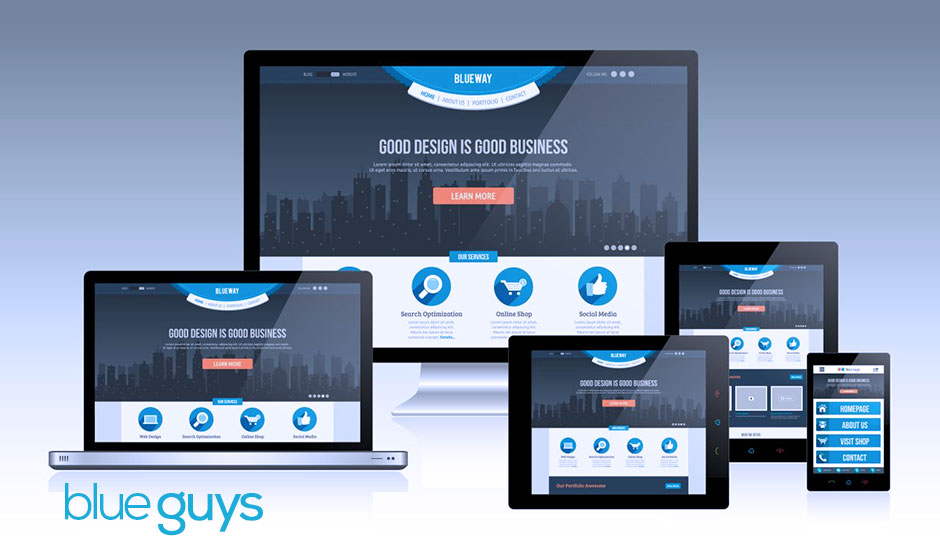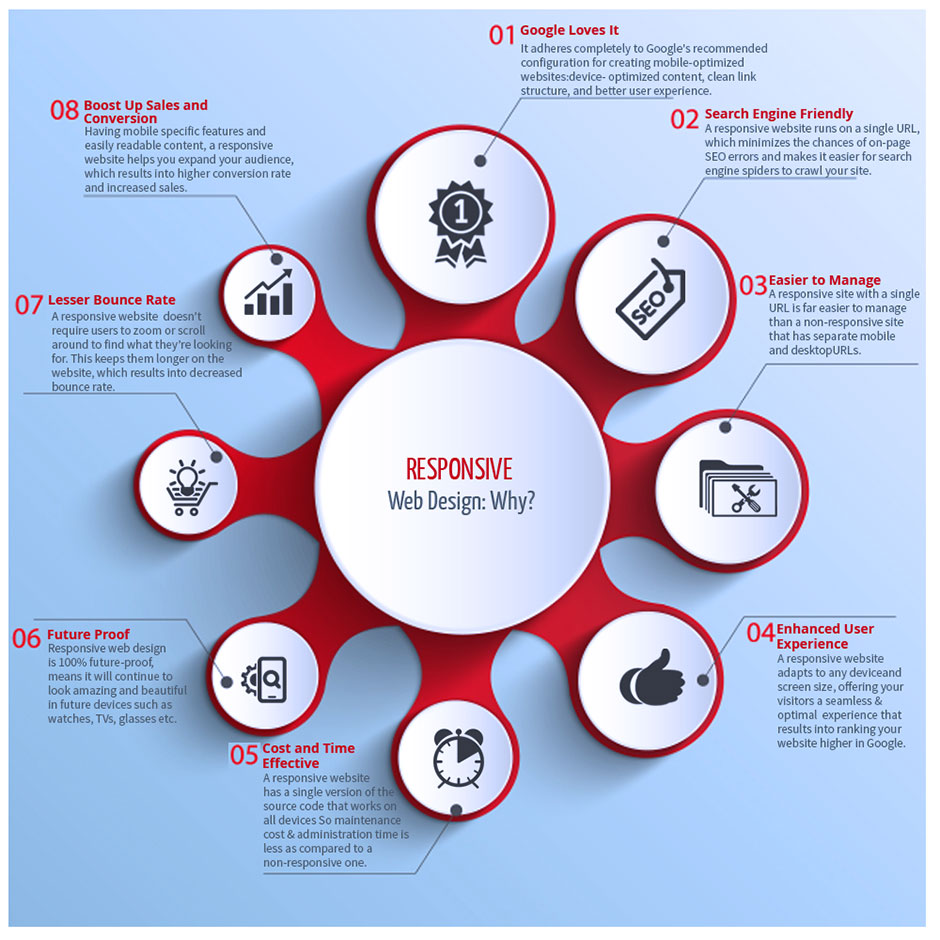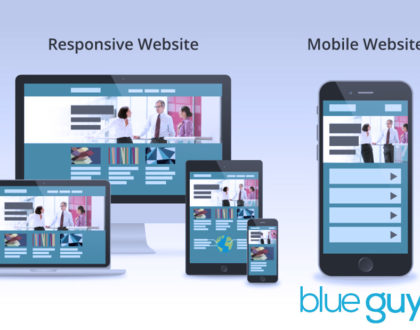Responsive Web Design

by Blue Guys
In the field of Web design and development, we’re quickly getting to the point of being unable to keep up with the endless new resolutions and devices. For many websites, creating a website version for each resolution and new device would be impossible, or at least impractical. Should we just suffer the consequences of losing visitors from one device, for the benefit of gaining visitors from another? Or is there another option?
Responsive Web Design
Responsive Web design is the approach that suggests that design and development should respond to the user’s behavior and environment based on screen size, platform and orientation. The practice consists of a mix of flexible grids and layouts, images and an intelligent use of CSS media queries.
Google Loves Responsive
For those drenched in the arguments claiming lowered Search engine rankings of responsive designs, Google has discharged a statement recommending developers and designers to adapt receptive approach towards website building. The Google webmasters guide says:
Google recommends webmasters follow the industry best practice of using responsive web design, namely serving the same HTML for all devices and using only CSS media queries to decide the rendering on each device.
And since Google is the divine being you’re trying to impress with your website, it is wise to pay attention to what Google loves. Google not only recommends Responsive Web Design as the best way to target mobile users, but also favors mobile-optimized sites when presenting results for searches made on a mobile device. This is especially true when mobile users search for local services.

Responsive Web Design and SEO Campaigns
A responsive website design is speculated to have eliminated the requirement of a separate mobile website. This develop once and run across devices has emerged as a boon for digital marketing agencies. Firstly, responsive designs are easily located by search engines and secondly they strip down the need of multiple SEO campaigns for multiple sites. Built one and advertise for one is cost effective and result oriented.
Well, the way they make shows is, they make one show. That show’s called a pilot. Then they show that show to the people who make shows, and on the strength of that one show they decide if they’re going to make more shows. Some pilots get picked and become television programs. Some don’t, become nothing. She starred in one of the ones that became nothing.
Day by day, the number of devices, platforms, and browsers that need to work with your site grows. Responsive web design represents a fundamental shift in how we’ll build websites for the decade to come.

User Experience is Enhanced
Websites are essentially a tool for sharing content. A user-friendly site makes it easier for visitors to find, absorb, and pass on this content. Above all else, responsive design places an emphasis on designing for the user – and with user experience being a big ranking factor, it makes sense that Google is encouraging developers to embrace RWD.
Responsive design helps modern websites appeal to modern users; users who are increasingly likely to traverse the internet using a mobile or tablet device. Users who still expect their desktop experience to be as smooth as ever. Responsive design helps modern websites appeal to modern users.
Responsive web design offers visitors the best possible user experience.
Recommended Posts

Social Media Influences Web Design
February 17, 2017

Responsive Design vs Mobile
October 7, 2016

Professional Web Designer
July 21, 2016
